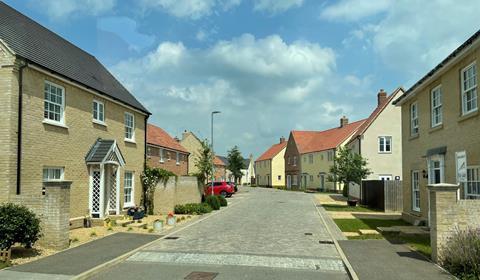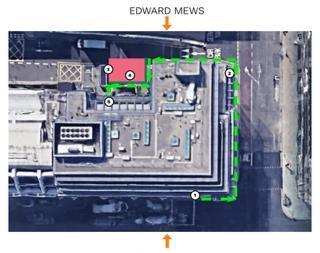Urban & Civic intends to double in size over the next five years. In January, the master-developer, founded by Nigel Hugill and Robin Butler in 2009, was bought for £506m by the Wellcome Trust. Peter Pereira Gray runs the trust’s £32bn portfolio, which gained 12.9% in value last year.

PPG, as he is called, has long eyed U&C. Capital for expansion is not a problem. U&C currently holds 11 sites within 100 miles of London, capable of holding 33,500 homes. Work has begun on seven.
Most advanced is Alconbury Weald (pictured), 1,425 flat acres north of Huntingdon, with room for 6,500 homes. Eleven hundred of these acres are a former US Air Force base, complete with 5,700 ft runway used to launch U2 spy-planes 60,000 ft into the stratosphere during the Cold War.
That is by way of introduction. More emerged during a site tour of Alconbury on 2 July led by Hugill, the suited-but-sockless chairman of the Royal Shakespeare Company, and joined by his equally urbane director of strategy, former barrister James Scott, plus Paul Cutler, whose patterned Paul Smith shirt marked him out as head of design.

Takeaway? U&C is way ahead of competitors when it comes to developing tracts of land capable of holding 3,000 to 10,000 homes. Go to the multi-layered website. Read and wonder if this private ’master-developer’ model could
be replicated. After all, it needs more than U&C to deal with the semi-paralysis affecting the 49 garden towns and garden villages, where very few sods have been turned on land enough for half a million homes.
One cavil: it would be nice if U&C asked its contracted housebuilders (mostly mid-sized builders, such as Hopkins and Morris) to build bigger homes, set further apart. Wishful thinking maybe, born out of Entreaties in Broken Homes to give occupiers more internal space and bigger gardens. I saw some higgledy-piggledy horrors when writing the book.
By contrast, the cruise around Alconbury was uplifting. God is clearly in the detail of Cutler’s design codes. U&C’s guiding hand is imposing harmony. As is the softening of the landscape with the planting of more than 50,000 teenage trees, at £2,000 a pop. Warnings to the builders to ‘bring us the GTX models only or you will get no more work from us, matey’ help.
Expensive business
How is it going? Rightmove shows 335 homes sold by mid-June, at an average price of £391,000, on the first 266-acre phase of 800 units, many of which are built, meaning that after 12 years, U&C is starting to get a return on the £60m sunk into the scheme since it bought the 1,100 acres in 2009.
Cash is collected from the housebuilders only when they have made a sale. The price of the ‘oven-ready’ land is generally around 30% of the house sale price, says Hugill. At a guess, U&C will have collected £40m to date.
But master-planning is an expensive business. The total cost of the infrastructure and section 106 commitments in the form of schools and a yet-to-be-built town centre will be around £250m.
The future of the entire garden towns and villages programme rests in large part on a variant of the U&C model being replicable. Can that be done? It is a bit like asking if the Berkeley Homes model for building on complex London sites is replicable. In theory, yes; in practice, the odds are against it.
Single land ownership is the crucial factor, says Hugill. Having brainy folk with a clear vision and access to capital not looking for returns in under 10 years, says me.
If all goes to plan, U&C will be helping put a dent in the housing numbers by 2026. Not least because Hugill plans to boost output by building for rent, but mainly because prepping 15 to 20 sites to sell, say, 300 homes a year on each seems, for this team, to be an achievable target.
Peter Bill is a journalist and the author of Planet Property and Broken Homes






























No comments yet